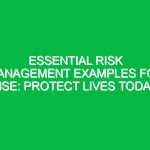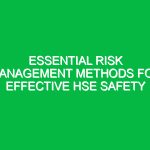Introduction
Hello team, and thank you for gathering for today’s toolbox talk. As we begin our work, it’s crucial to address an ongoing challenge we face in our workplace—COVID-19 & Other Communicable Diseases. This discussion is not just about ensuring compliance with health Regulations; it’s about safeguarding our health and the health of our colleagues. By understanding and implementing effective strategies to combat these diseases, we can maintain a safe working Environment for everyone.
Understanding COVID-19 & Other Communicable Diseases
COVID-19, caused by the SARS-CoV-2 virus, is just one of many communicable diseases that can pose a risk in our workplace. Other communicable diseases include influenza, tuberculosis, and norovirus, all of which can affect our workforce and productivity. These diseases can spread from person to person, often through respiratory droplets, close contact, or contaminated surfaces.
It’s vital to recognize that we all play a role in preventing the spread of these diseases. Each of us must be aware of the symptoms, modes of transmission, and preventative measures. Let’s delve deeper into these aspects.
Symptoms of COVID-19 & Other Communicable Diseases
Being able to identify the symptoms of communicable diseases is crucial for early intervention. Common symptoms of COVID-19 include:
- Cough
- Fever or chills
- Shortness of breath or difficulty breathing
- Fatigue
- Muscle or body aches
- Loss of taste or smell
- Sore throat
- Congestion or runny nose
- Nausea or vomiting
- Diarrhea
Similarly, other communicable diseases may present with varying symptoms, often overlapping with those of COVID-19. If you notice any of these symptoms in yourself or a coworker, it’s imperative to report it immediately to your supervisor and seek medical advice.
Transmission of COVID-19 & Other Communicable Diseases
COVID-19 and many other communicable diseases spread through several common methods:
- Direct Contact: This includes physical touch with an infected person.
- Respiratory Droplets: Coughing or sneezing can release droplets that others may inhale.
- Surface Contamination: Touching surfaces that have been contaminated by an infected person can lead to transmission, especially if you then touch your face.
Understanding these transmission methods enables us to take proactive steps to minimize risk in our workplace environment.
Preventative Measures
Now that we understand the risks associated with COVID-19 & Other Communicable Diseases, let’s discuss the preventative measures we can implement. These practices are essential for our health and Safety:
- Hand Hygiene: Regularly wash your hands with soap and water for at least 20 seconds. If soap and water are unavailable, use a hand sanitizer that contains at least 60% alcohol.
- Mask Wearing: Wearing a mask in crowded or enclosed spaces can significantly reduce the risk of transmission.
- Social Distancing: Maintain a safe distance from others, ideally at least six feet, especially if someone is coughing or sneezing.
- Regular Cleaning: Frequently clean and disinfect high-touch surfaces such as doorknobs, tools, and equipment.
- Stay Home When Sick: If you feel unwell or exhibit symptoms of any communicable disease, do not come to work. Report your condition to your supervisor.
Implementing these measures consistently will help us all stay safe while on the job. Remember, safety starts with you!
Real-Life Examples
To illustrate the importance of these measures, let’s consider a hypothetical scenario. Imagine a situation where an employee comes to work feeling slightly unwell but decides to push through. They may unknowingly spread COVID-19 to colleagues who then become sick, leading to increased absenteeism and disrupted operations. This not only affects the individuals who fall ill but also impacts the entire team and our productivity.
On the flip side, consider a workplace that actively promotes health practices: employees wear masks, maintain distance, and regularly sanitize their hands. In this environment, even if one person does come down with a communicable disease, the risk of widespread transmission is significantly reduced.
Regulations and Standards
It’s essential to stay informed about our legal obligations regarding COVID-19 & Other Communicable Diseases. Regulatory bodies such as the World Health Organization (WHO) and the Centers for Disease Control and Prevention (CDC) provide guidelines that we must follow. Additionally, our company has specific policies in place to ensure compliance with these regulations.
Non-compliance can lead to serious consequences, including fines, legal action, and most importantly, compromised health and Safety. By adhering to these standards, we not only protect ourselves but also contribute to a safer workplace for everyone.
Encouraging Open Dialogue
I want to encourage an open dialogue about this topic. If you have any questions or concerns regarding COVID-19 & Other Communicable Diseases, please feel free to share. Discussing these issues can help us understand everyone’s perspective and promote a culture of safety and care.
What measures do you think we can improve upon in our workplace? Have you experienced any challenges in adhering to these safety practices? Your feedback is invaluable in promoting a safe working environment.
Conclusion
In conclusion, understanding and addressing COVID-19 & Other Communicable Diseases is a critical aspect of our Health, Safety, and Environment (HSE) responsibility. By recognizing symptoms, understanding transmission, and implementing preventative measures, we can collectively reduce the risk of these diseases in our workplace.
Thank you for your attention and commitment to maintaining a safe working environment. Let’s continue to look out for one another and ensure that we all stay healthy and safe. Remember, together we can make a significant difference!


